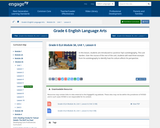
In this lesson, students are introduced to Laurence Yep’s autobiography, The Lost Garden.
- Subject:
- English Language Arts
- Material Type:
- Lesson Plan
- Provider:
- EngageNY
- Author:
- Expeditionary Learning
- Date Added:
- 04/04/2014

In this lesson, students are introduced to Laurence Yep’s autobiography, The Lost Garden.
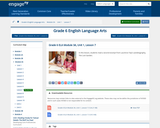
In this lesson, students read a second excerpt from Laurence Yep’s autobiography, The Lost Garden.

This lesson builds on the work completed in Lesson 7. Students complete the final column of their Crime in the Neighborhood graphic organizer.
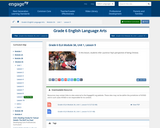
In this lesson, students infer Laurence Yep’s perspective of being Chinese.
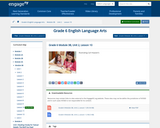
In this lesson, students will illustrate a scene from Flush that shows evidence of Carl Hiaasen’s perspective of Florida. The word “illustrate” means students can choose to either sketch and label or write about the scene and how it shows evidence of Carl Hiaasen’s perspective, depending on their preferred way of expressing their ideas.
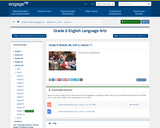
This lesson is the End of Unit 2 Assessment. Assess student responses on the end of unit assessment using the Grade 6 2-Point Rubric—Short Response, and the Illustrating Perspective Rubric.

This lesson introduces students to the primary focus of this unit: point of view. Students begin to identify the narrator Noah’s point of view in Flush and analyze the techniques that Carl Hiaasen uses to develop it.
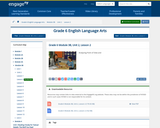
In this lesson, students build on their previous work on figurative language from Module 2.

This lesson begins to gradually release students to work more independently. They work in triads without any teacher modeling to analyze an excerpt of Flush for point of view, figurative language, tone, and meaning.
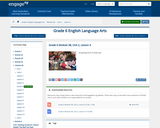
This lesson is similar in structure to Lesson 3: students work in triads without any teacher modeling to analyze an excerpt of Flush for point of view, figurative language, tone, and meaning.
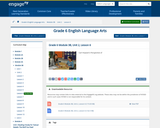
In this lesson, students are introduced to an excerpt from an interview titled “Five Creative Tips from Carl Hiaasen: Florida’s Cleverest Chronicler.”

In this lesson, students read the first of a two-part excerpt of the transcript of an interview with Carl Hiaasen that was aired on CBS’s 60 Minutes in 2005.
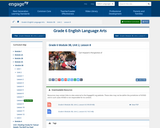
In this lesson, students read Excerpt 2 of “Florida ‘A Paradise of Scandals’” and complete most of the Gathering Evidence of Hiaasen’s Perspective: Part 3 graphic organizer.
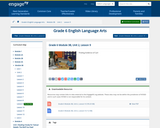
In this lesson, students work in triads to identify evidence of Carl Hiaasen’s perspective of Florida in Flush.
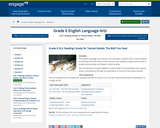
This unit develops students’ abilities to read closely for textual details and compare authors’ perspectives through an examination of a series of texts about wolves.
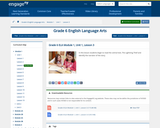
In this lesson students begin to read the central text, The Lightning Thief and identify the narrator of the story.
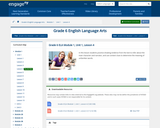
In this lesson students practice drawing evidence from the text to infer about the main character and narrator, and use context clues to determine the meaning of unfamiliar words.
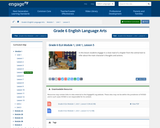
In this lesson students engage in a close read of a chapter from the central text to infer about the main character's thoughts and actions.
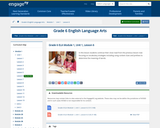
In this lesson students continue their close read from the previous lesson now focusing on vocabulary strategies including using context clues and prefixes to determine the meaning of words.

This resource includes nonfiction two texts, a link to a video, and 13 text-dependent questions (including one optional constructed-response prompt for students). Also includes explanatory information for teachers regarding alignment to the CCSS.